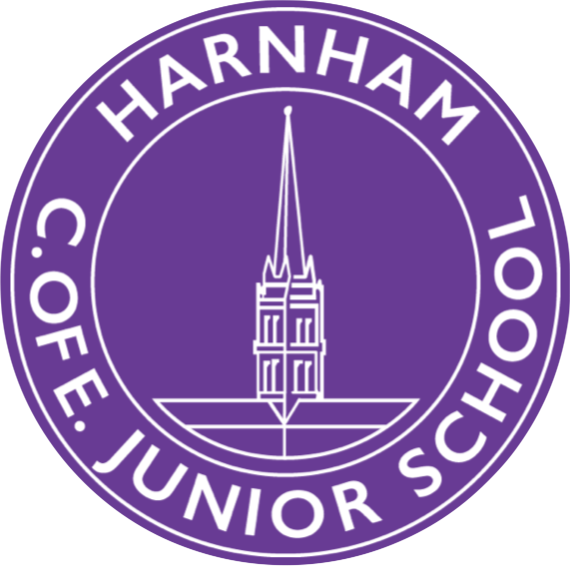Design and Technology
DT is a subject that gives every child the chance to shine by creating something truly original. Where else can you plan, design and make a toy? Or a nutritious meal? Or sew something that can be worn or used every day? The skills children gain through DT are truly skills for life and can sometimes represent the first steps a child takes in what will one day be their career. At Harnham Juniors we make sure children have every chance to be original as they explore, design and create. The opportunity to evaluate their design choices is built into the curriculum, ensuring that children know exactly what went right!
-
At the heart of our curriculum lie our school values, expressed through the mnemonic FAITH – Forgiveness, Active Love, Inspiration, Tenacity and Harmony. These values underpin all learning and enable our children to flourish throughout their journey at our school.
Within Design and Technology, pupils are encouraged to think creatively and critically as they design and make products that solve real and relevant problems. They are taught to communicate their ideas clearly, show tenacity when developing and refining designs and inspire one another through collaboration and innovation.
Children learn that design is a process of exploration and adaptation; that ideas can and often should, change. This approach builds resilience and reflective thinking, helping pupils recognise that overcoming challenges is an essential part of success.
It is our intent at Harnham Junior School that all children experience a broad and balanced DT curriculum, where they work with a range of materials and tools, understand the link between the technological and natural worlds and develop transferable life skills.
-
Our Design and Technology curriculum is thoughtfully planned and sequenced using the Kapow Primary scheme of learning, ensuring clear progression of knowledge and skills from Year 3 to Year 6. This cohesive structure enables pupils to build on prior learning and make meaningful connections between creative disciplines. Design and Technology is taught over three half terms each year, with a focus on cooking and nutrition, mechanical systems, structures, textiles, electrical systems and the digital world. During the other three half terms, pupils engage in Art and Design, where they explore a range of media, techniques and artistic styles to develop their creativity, critical thinking and self-expression. Together, these subjects provide a balanced and inspiring curriculum that nurtures innovation, imagination and problem-solving.
Through these comprehensive units, children are taught the full design process: design, make, evaluate and technical knowledge. They are given opportunities to explore and use a variety of materials, components and tools, developing technical competence and confidence.
Practical lessons encourage independence, teamwork and resilience. Pupils apply their understanding of mechanical and electrical systems, computing and structures to real-world design challenges. Cooking and nutrition form a key element of the curriculum, allowing pupils to learn about healthy eating, meal planning and food preparation which are vital life skills for their future.
Links are made across subjects, particularly with science, computing and art, helping pupils see how design thinking shapes the wider world. Teachers adapt and enrich Kapow units to reflect the context of our school community and to provide opportunities that promote our FAITH values in action.
-
Our Design and Technology curriculum at Harnham Junior School is designed to ensure clear progression of knowledge, skills and subject-specific vocabulary across all year groups. Vocabulary development is embedded within every unit, supporting pupils in articulating their learning with confidence and precision.
The impact of DT is continually monitored through a combination of formative and summative assessment. Teachers assess pupils’ understanding throughout lessons by observing their work individually, in pairs, in groups and during whole-class discussions. In addition, each unit includes a knowledge and skills quiz that tracks pupils’ progress and understanding in line with our curriculum goals. This approach ensures that assessment is purposeful, consistent and used effectively to inform future teaching and learning.
By the end of Year 6, children should be able to:
· Develop an understanding of the functional and aesthetic properties of a wide range of materials and resources.
· Know how to select, use and combine tools and techniques effectively to shape, decorate and construct products.
· Build and apply a broad repertoire of skills, knowledge and understanding to create high-quality, innovative outcomes - including models, prototypes, CAD designs and finished products that meet specific user needs.
· Understand and apply the principles of healthy eating and nutrition, including food groups, key processes and the safe use of cooking equipment.
· Appreciate the contribution of significant individuals, inventions and events in shaping design and technology, both past and present.
· Recognise how design decisions can impact the wider world, considering community, social and environmental factors.
· Reflect and self-evaluate throughout the design process, identifying strengths and areas for improvement.
· Meet the end-of-key-stage expectations set out in the National Curriculum for both Design and Technology and Computing.
Children leave our school with a strong foundation of design and technological understanding and the ability to apply these skills in new contexts. They can think independently, evaluate critically and approach challenges with imagination and tenacity — living out our FAITH values in their learning and beyond.
